MATADOR AMBASSADORS Ben Ditto and Katie Lambert tour the obscure in the Yukon Territory.
All photos by author
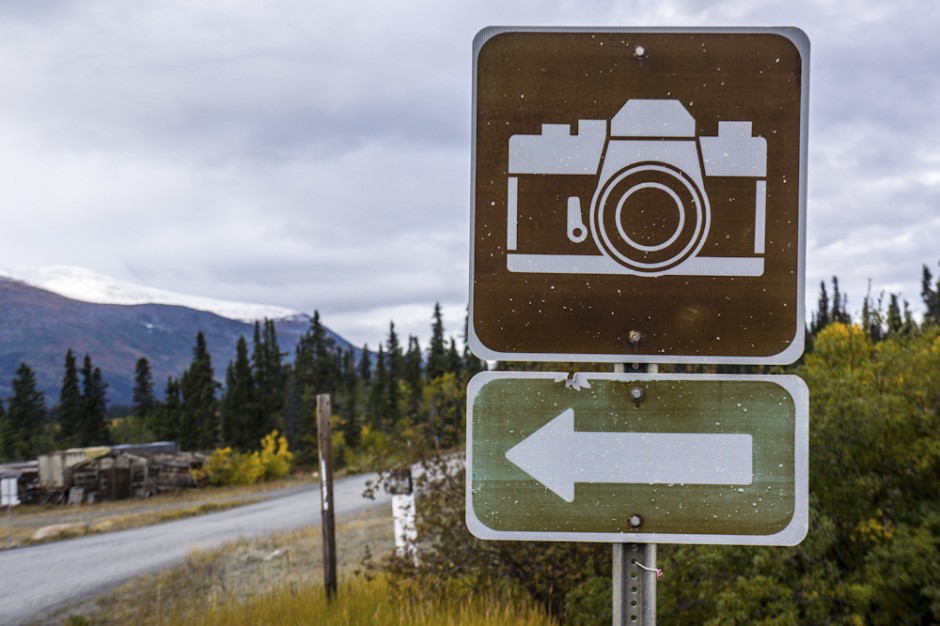
Yukon
When I travel, I am always on the lookout for subtle clues that will reveal marvelous and dramatic photo-ops. On a recent trip to the Yukon, my wife (Katie Lambert) and I travelled from Whitehorse to Haines Junction, letting our instinct for the visual guide us on this 'Tour of the Obscure'.

Yukon
Sometimes, travel photography is all about getting lost looking for places that aren't in the guidebook. Here we are, looking for a climbing area called the Rock Gardens, near Whitehorse, and we wind up in a replanted forest of pine trees, none larger around than your thigh.
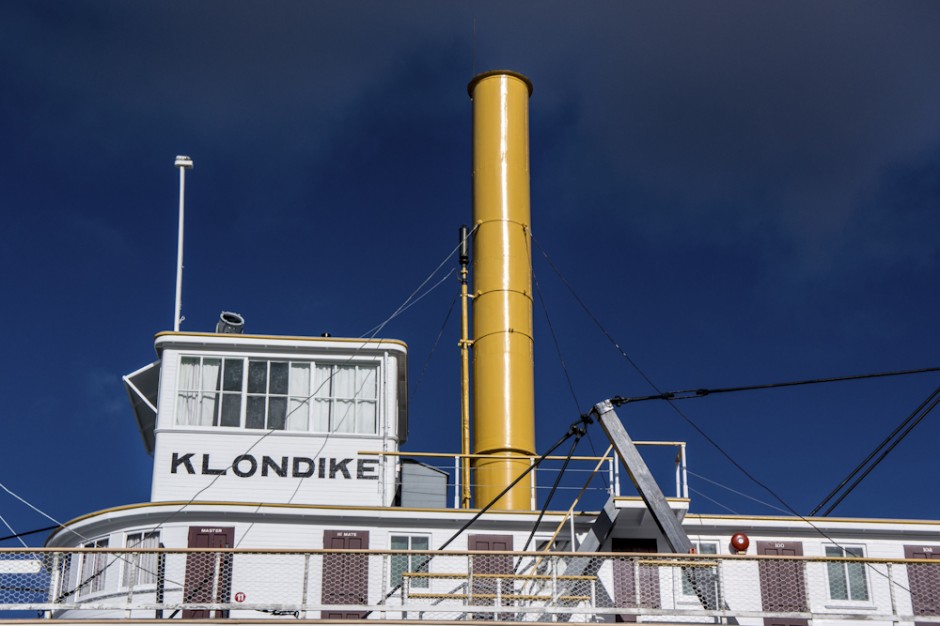
Yukon
Whitehorse, YT, in terms of tourist attractions, is all about the Gold Rush, and the Klondike is one of the primary stops. On our way into town from the airport, we asked the shuttle driver, "What year was the Gold Rush?" He replied: "Which gold rush? There have been some in the past, but we're in the middle of one now." While most of Canada (and the world) is complaining about the economic climate, the Yukon is booming due to its extractive mineral industries. Still, everywhere we turned we saw remnants of the infrastructure of past "gold rushes."
Intermission

Yukon
Among the tailings left from the early 20th-century Gold Rush, there's some of the coolest junk around...the Yukon is a true gold mine of found-art-photography. The variety of old cars, old cabins, and old school humanity that can be found here is staggering.

Yukon
Seriously, as a photographer, or photography enthusiast, cracked paint and blocky, vibrant colors are the holy grail. Every photographer goes through this process of exploration in their career -- MACRO -- and road trips provide great opportunities to explore this visual tendency.
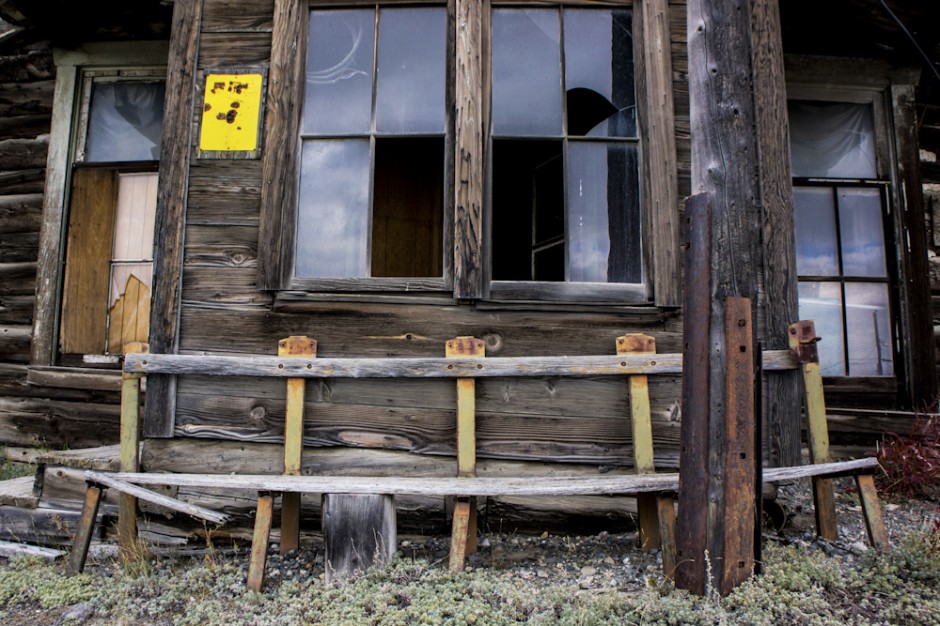
Yukon
Near Champagne, YT, you'll find a whole town consisting of old buildings and cars. Native people have used this zone as a meeting place between the interior forest lands and the coast for centuries. Now the ALCan Highway runs along the outskirts of town. Seeing this old bench plopped down right in front of this old building made me wonder about some of the conversations that took place here through the years of rapid change and development.

Yukon
We got hungry in the Yukon, and we ate a lot of great food. We wondered where the food came from, so we visited a farm. This was mid-September, and there was snow forecast. The farmer at Yukon Gardens was stressed, and they were harvesting everything as fast as they could. They have a beautiful facility, growing tomatoes, squash, corn, and more, all in massive greenhouses. EAT LOCAL!
Intermission

Yukon
Katie really loved the compost pile at Yukon Gardens. She scored a perfectly edible squash from the pile -- she's pretty earthy!

Yukon
I always wanted to go to Kluane National Park, near Haines Junction. I've skied in Alaska's Wrangell-St. Elias National Park, which is neighbor to the Kluane. Combined, they make up the largest piece of protected wilderness land in the world, over 25 million acres. Hundreds of square miles. Lake Kathleen sits on the edge of this wilderness.

Yukon
Kluane is one of the best reasons for visiting the Yukon. Taking a walk through these forests really feels like a cleanse for the soul and psyche. We really wanted to see a grizzly bear on this trip. This pic is my best shot of a bear…I'm sure there's one in there somewhere.
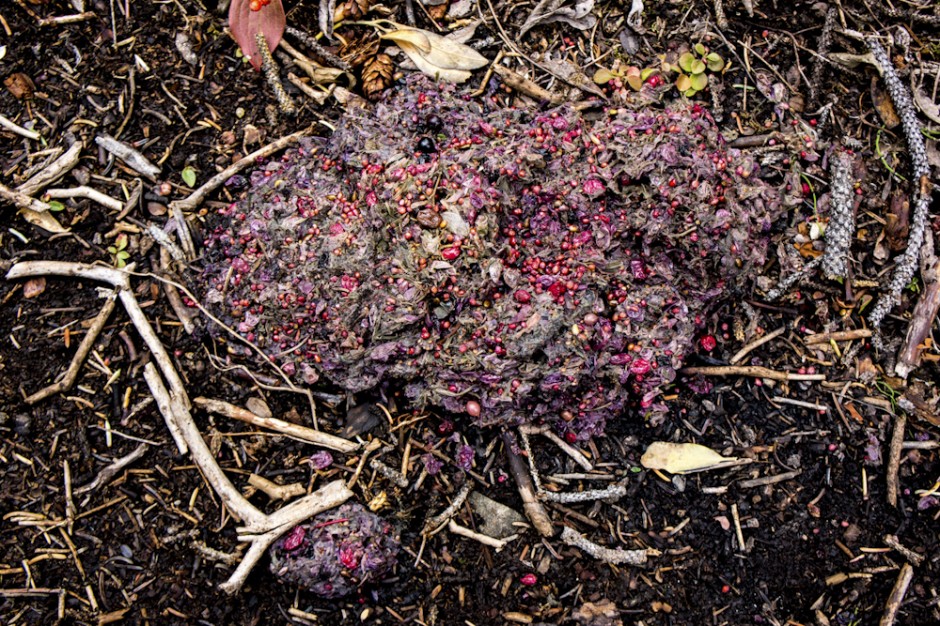
Yukon
Here's proof that there are bears in the Yukon. There are so many berries you could make a pie with it. We aren't sure if this is black or grizzly bear scat -- in the moment, it didn't really matter.
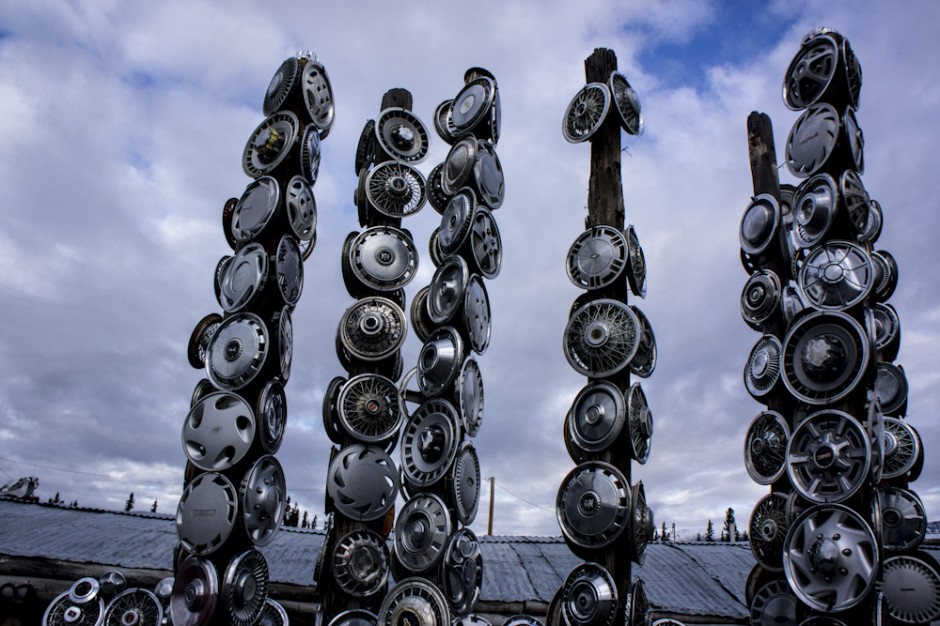
Yukon
The native heritage in the Yukon is alive and well. I view these modern-day totem poles and grin, thinking whoever made them had a good sense of humor. The Yukon First Nation mode of life has seen very rapid change since the early 20th century, when the ALCan Highway opened this area to further exploration / exploitation.

Yukon
We visited two First Nations cultural heritage centers. The Kwanlin Dun center is in Whitehorse, right along the Yukon River downtown. We also visited the Da Ku cultural center in Haines Junction. These centers are full of information and exhibits from the communities of First Nations who live here.
In 2008, the Canadian government formally apologized to the First Nations communities for the treatment they faced during the centuries-long period of white settlement of Canada. Specifically, they apologized for the placement of thousands of native children in "residential schools," whose purpose was to "kill the Indian in the child." The apology has been important to the cultural restoration of the First Nations people in Canada. I hope something like this can one day be arranged for Native communities in the US.
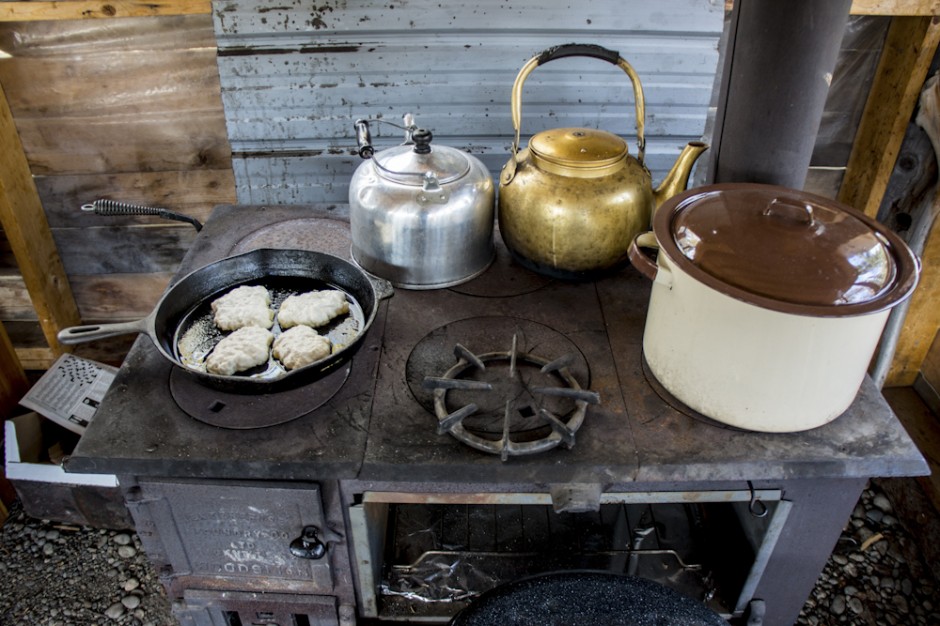
Yukon
In a world where so much is new, we found a refreshing alternative in a preserved way of life at Kwaday Dan Kenji ("Long Ago People's Place") with Harold Johnson and Meta Williams. The two have endeavored to reconstruct First Nations living techniques, which are in danger of being forgotten. On the surface, this display consists of lodges, traps, and food caches. There's a deep feeling of peace in this place. If you're lucky, you'll get a tour from Harold and his bear dog. And, if you're really lucky, Meta will make you some bannock. I think if you stayed in this place long enough, you could really learn how to live.

Yukon
Meta gives Katie the tour of the oldest cabin on the property. It is over 100 years old and was built by Harold's grandfather. It was then traded to Meta's grandmother for 20 salmon.
In our Yukon travels, we often found ourselves wondering about the stories that have played out in the historical buildings and machinery junkyards. We really appreciated our time at Kwaday Dan Kenji because it's possible to get the backstory firsthand.
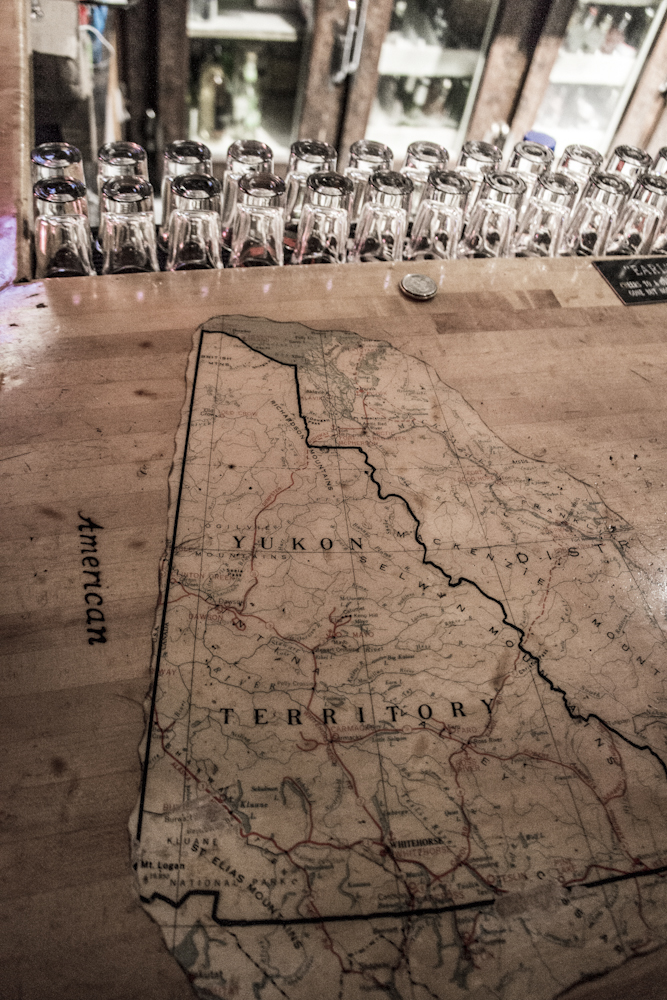
Yukon
The Yukon Territory is vast and very far north of the Equator. In our travels, we crossed from the east side (border with the Northwest Territories) to its western border, shared with Alaska. Everywhere we went, we met people who seemed willing to share their story with us -- all we had to do was ask.
